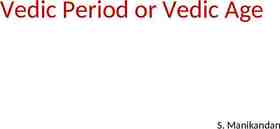Exampl CHAPTER 23 PART 3 es
9 Slides244.94 KB
Exampl CHAPTER 23 PART 3 es
From a previous example, a sample of size 20 from insurance companies showed an average life expectancy 78.6 years and a standard deviation of 4.48 years. We wish to find the sample size of size n that would allow a 95% confidence level for the mean life expectancy of a policy holder from the insurance company to have a margin of error of only one year. We can use and solve for n, but there’s a problem. Since we don’t yet know n, we don’t know which critical value t to use. We can use a critical value z to estimate n, and this will help us narrow down to
Solution: We want a 95% confidence level, so we will estimate using z 1.96. We want the margin of error to be 1 year. The standard deviation of the sample was 4.48. 4.48 8.7808 1 1.96 1 𝑛 77.1 𝑛 8.7808 𝑛 𝑛 Use n 78 at 95% confidence. From the table, is the closest thing. 𝑀𝐸 𝑡 𝑛 1 𝑠 𝑛 4.48 1 1.992 𝑛 𝑛 79.6 Sample Size: 80
In 1960, census results indicated that the age at which American men first married had a mean of 23.3 years. It is widely suspected that young people today are waiting longer to get married. We want to find out if the mean age of first marriage has increased during the past 40 years. a) Write appropriate hypotheses.
In 1960, census results indicated that the age at which American men first married had a mean of 23.3 years. It is widely suspected that young people today are waiting longer to get married. We want to find out if the mean age of first marriage has increased during the past 40 years. b) We plan to test our hypotheses by selecting a random sample of 40 men who married for the first time last year. Do you think the necessary assumptions forThe inference satisfied? Randomization condition: 40 menare were randomly selected. 10% condition: 40 is less than 10% of all recently married men. Nearly Normal condition: The population of ages of men at first marriage is likely to be skewed to the right. It is much more likely that there are men who marry for the first time at an older age than at an age that is much younger (before 18). We should
In 1960, census results indicated that the age at which American men first married had a mean of 23.3 years. It is widely suspected that young people today are waiting longer to get married. We want to find out if the mean age of first marriage has increased during the past 40 years. c) Describe the approximate sampling distribution model for the mean age in such samples. If the conditions for inference are satisfied, we can model the sampling distribution of the mean age of men at first marriage with :
In 1960, census results indicated that the age at which American men first married had a mean of 23.3 years. It is widely suspected that young people today are waiting longer to get married. We want to find out if the mean age of first marriage has increased during the past 40 years. d) The men in our sample married at an average age of 24.2 years, with a standard deviation of 5.3 years. What’s the Pvalue for this result? e) Explain in context what this P-value means. Using , the P-value is 0.1447. If the mean age at first marriage is still 23.3 years, there is a 14.5% chance of getting a sample mean of 24.2 years or older simply from natural sampling variation if the null hypothesis is true.
In 1960, census results indicated that the age at which American men first married had a mean of 23.3 years. It is widely suspected that young people today are waiting longer to get married. We want to find out if the mean age of first marriage has increased during the past 40 years. f) What’s your conclusion? Since the P-value of 0.1447 is high, we fail to reject the null hypothesis. There is no evidence to suggest that the mean age of men at first marriage has changed from 23.3 years, the mean in 1960.
Today’s Assignment: Add to HW: page 554 #9-13, 15, 32














